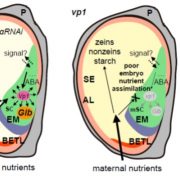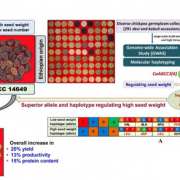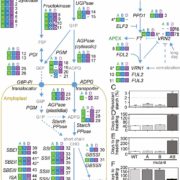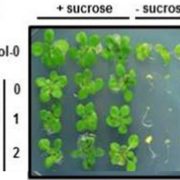Tiny Mutation Linked to Tastier Tomatoes
Ye et al. discover a gene affecting tomato flavor. The Plant Cell 2017. https://doi.org/10.1105/tpc.17.00211
By Jie Ye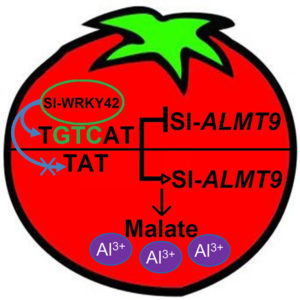
Malate—a widely occurring organic acid in plants—is an important contributor to taste. Variation in acid content has a much greater impact on flavor than does the limited variation in sugar content that exists among tomato cultivars. Additionally, plants counteract Al3+ toxicity in the surrounding soil by pumping malate out of root cells. In plant cells, most soluble solids, including malate, are stored in a sac-like structure called the vacuole. Proteins on the tonoplast (vacuole membrane) transport malate in and/or out of the vacuole. Al-activated malate transporters (ALMT) are plant-specific anion channel proteins that are located on the tonoplast or plasma membrane. Previous studies of ALMTs have focused on their protective role based on their ability to transport malate out of cells, where it chelates surplus Al3+.
The regulation of malate metabolism is poorly understood in crops such as tomato (Solanum lycopersicum). We would like to unravel the genetic basis of tomato malate variation: Which genes regulating the accumulation of malate were selected during the domestication and improvement of tomato and how do these genes operate?
We used various methods to characterize the genetics of malate accumulation in genetically diverse tomato accessions. We identified TFM6 (tomato fruit malate 6), which corresponds to ALMT9 in the model plant Arabidopsis, as the major contributor to variation in fruit malate accumulation among tomato genotypes. We linked a tiny mutation in the region that regulates the activity of Sl-ALMT9 to high fruit malate content. Further analysis indicated that this mutation disrupts a binding site in this regulatory region of Sl-ALMT9, which prevents binding of a repressor of this gene, thereby activating the gene and promoting high fruit malate accumulation. Evolutionary analysis revealed that this highly expressed version of Sl-ALMT9 was selected for during tomato domestication. Furthermore, we found that tonoplast-localized Sl-ALMT9 increases in abundance following exposure to Al, thereby elevating malate transport out of the cell and enhancing Al resistance.
In addition to identifying an ALMT in tomato, our discoveries explain how this gene improves the flavor of tomatoes and protects tomato plants from Al toxicity. Future research will aim to discover other ALMTs or tonoplast–localized proteins that work with Sl-ALMT9 to affect malate transport in tomato. Now that we know that a particular version of Sl-ALMT9 has favorable properties, we can design strategies to improve flavor and resistance qualities in other tomato varieties.
Jie Ye, Xin Wang, Tixu Hu, Fengxia Zhang, Bing Wang, Changxin Li, Tianxia Yang, Hanxia Li, Yongen Lu, James J Giovannoni, Yuyang Zhang and Zhibiao Ye. (2017). An InDel in the Promoter of Al-activated malate transporter 9 Selected During Tomato Domestication Determines Fruit Malate Contents and Aluminum Tolerance. Plant Cell https://doi.org/10.1105/tpc.17.00211




